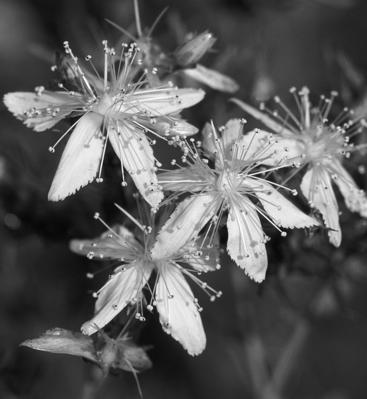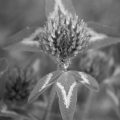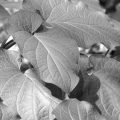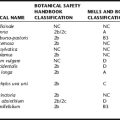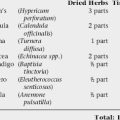ST. JOHN’S WORT
Botanical name: Hypercium perforatum
Part used: Flowers, upper 6 to 8 inches of the aerial portion of the herb, including leaf and flower
PRINCIPAL USES
CLINICAL INDICATIONS
wound healing herb—in formulae for the treatment of cuts, scrapes, and puncture wounds, as well as to soothe and heal the perineum with or without perineal lacerations after childbirth, to soothe and reduce hemorrhoids, and for the treatment of vaginal abrasions in vaginitis and those that can occur with perimenopausal vaginal atrophy and vaginal dryness. Herbal practitioners may also include SJW in formulae for the treatment of cystitis, urinary frequency and urgency, and interstitial cystitis.
MECHANISMS OF ACTION
The precise mechanisms of action for the antidepressant effects of SJW are not understood. In vitro studies using hyperforin have demonstrated significant binding of GABA A and GABA B, adenosine, MAO, and benzodiazepine receptors. Only GABA A and GABA B receptor activity is likely to be achieved in concentrations to elicit a biological effect after oral administration in humans. Early studies focused on the inhibitory activity of hypericin on MAO receptors; however, most studies have demonstrated only weak binding if at all. It appears that there might be some effects in inhibition of synaptosomal uptake of serotonin (5-HT), dopamine, and noradrenaline, with an upregulation of 5-HT in rat cortex, with some increase in dopamine and noradrenaline. Studies have shown possible decrease in tryptophan degradation; tryptophan is a 5-HT precursor. Another possible explanation for the antidepressant effect of SJW is via inhibition of interleukin-6 (IL-6) by hyperforin and via inhibition of substance P mediated effects on depression.

